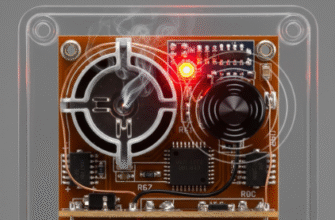The flashing lights, the cacophony of bells, buzzers, and electrifying sound effects, the frantic clatter of a silver ball careening off bumpers and targets – this is the unmistakable sensory rush of playing pinball. It’s a tangible, physical experience that has captivated players for generations, a mechanical marvel disguised as pure, unadulterated fun. Long before sophisticated video games dominated arcades, these intricate machines, with their vibrant artwork and challenging layouts, were the kings of coin-operated entertainment.
From Parlor Games to Pinball Beginnings
The roots of pinball stretch further back than many realize, evolving from older tabletop games popular in European parlors. Think of games like Bagatelle, where players used a cue stick to shoot balls past pins or into scoring holes on an inclined table. These early games relied heavily on gravity and chance. By the 1930s, coin-operated versions began appearing in the United States, often referred to as “marble games” or “pin games.”
These early machines, like Bally’s “Baffle Ball” (1931) or Gottlieb’s “Baffle Ball Senior,” were purely mechanical. Players would launch a ball using a spring-loaded plunger, and then simply watch as it bounced randomly off pins and hopefully landed in high-scoring pockets. There was no direct player interaction once the ball was in play, aside from perhaps illegally bumping or shaking the cabinet – a practice quickly discouraged by “tilt” mechanisms. The primary appeal was the gamble, the chance of winning a prize or free game based purely on luck.
The Dawn of Electrification
Things started getting more interesting later in the 1930s with the introduction of electricity. Machines like “Contact” (1934) introduced electric bumpers that would kick the ball away with added force when struck, adding a new layer of unpredictable action. Lights and sound effects soon followed, making the games more visually and aurally stimulating. However, the core gameplay remained largely passive once the ball was launched. It was still mostly a game of watching and hoping.
The Game Changer: Enter the Flipper
Everything changed in 1947. This was the year D. Gottlieb & Co. released “Humpty Dumpty,” a machine designed by Harry Mabs. Its revolutionary feature? Six player-controlled flippers, three on each side, positioned halfway up the playfield. For the first time, players could actively influence the ball’s trajectory, batting it back up the playfield, aiming for targets, and prolonging their game through skill rather than sheer luck. This was the birth of modern pinball.
While initially small and perhaps awkwardly placed by modern standards, the flipper was a paradigm shift. It transformed pinball from a game of chance, often associated with gambling and subsequently banned in many cities (including New York City for decades), into a legitimate game of skill and reflexes. Manufacturers quickly recognized the potential, and flippers became a standard feature, migrating to their now-familiar position at the bottom of the playfield.
Gottlieb’s ‘Humpty Dumpty’, released in 1947, is widely recognized as the first pinball machine featuring player-controlled flippers. This groundbreaking innovation fundamentally altered pinball’s nature. It transitioned the game from being primarily chance-based to one requiring considerable player skill and interaction. Prior to flippers, player involvement was mostly limited to the initial plunge and hopeful nudging.
The Golden Age: Flippers, Bumpers, and Arcade Glory
The period from the late 1940s through the 1970s is often considered the “Golden Age” of pinball. With flippers firmly established, designers focused on creating increasingly complex and engaging playfields. Key components became iconic:
- Flippers: The heart of player interaction. Learning timing, aiming, and techniques like cradle-separation or the drop catch became essential skills. Flipper design evolved, becoming more powerful and standardized to the two-flipper setup at the bottom.
- Pop Bumpers (or Jet Bumpers): These round, mushroom-shaped bumpers vigorously kick the ball away in random directions upon contact, often triggering lights and sounds and significantly increasing the ball’s speed and unpredictability. They are crucial for creating chaotic, fast-paced action.
- Slingshots: Typically triangular rubber bands located just above the flippers, slingshots propel the ball rapidly across the lower playfield, often directing it towards the opposite flipper or into outlanes.
- Targets: Various types evolved, including stationary targets, drop targets (which fall below the playfield when hit, often needing to be completed in sets), and rollover targets (activated when the ball rolls over them).
- Ramps and Loops: Later innovations, particularly prominent from the 80s onwards, introduced plastic or metal ramps that players could shoot the ball up, leading to different playfield levels, bonus features, or habitrails that returned the ball to a flipper.
Manufacturers like Gottlieb, Bally, and Williams became household names among arcade enthusiasts. Themes ranged wildly, drawing inspiration from popular culture, sports, fantasy, science fiction, and more. The backglass artwork became an art form in itself, vibrant and detailed, designed to attract players from across the room. The mechanical complexity grew, incorporating intricate relays, switches, and score reels before the advent of solid-state electronics in the late 1970s revolutionized scoring, sound, and game logic.
The Arcade Buzz
Walking into an arcade during pinball’s prime was an assault on the senses. The room pulsed with the glow of countless machines, the air thick with the symphony of mechanical clatter, electronic beeps, and triumphant fanfare. Players hunched over their chosen machines, bodies reacting instinctively, nudging the cabinet just enough to influence the ball without triggering the dreaded tilt penalty. It was a social hub, a place of competition where achieving the high score, immortalized in glowing digits on the backglass or later on digital displays, was the ultimate goal.
Electronics, Challenges, and Enduring Appeal
The late 1970s brought solid-state electronics, replacing complex electromechanical relays with circuit boards. This allowed for digital scoring, more sophisticated sound effects and synthesized speech, complex rule sets, and memory features like saving high scores. Machines became flashier and arguably more reliable.
However, the early 1980s also brought the video game revolution, led by giants like Pac-Man and Space Invaders. These digital newcomers offered novel experiences and rapidly drew crowds, causing a significant downturn in pinball’s popularity. Arcades shifted focus, and pinball production numbers dwindled. Many thought the era of the silver ball was over.
Important Note: While nudging or bumping the machine is a key skill, excessive shaking will trigger the “Tilt” mechanism. This instantly ends the ball in play, forfeiting any potential bonuses. Mastering the subtle art of influencing the ball without tilting is crucial for high-level play.
Yet, pinball never truly disappeared. It retained a dedicated following, and designers continued to innovate. Machines from the late 80s and 90s, like “The Addams Family” or “Medieval Madness,” became highly sought-after classics, known for their deep rulesets, immersive themes, and complex mechanical toys integrated into the playfield.
Why We Still Play
What explains pinball’s enduring magic and its modern resurgence among collectors and players? It’s the tangibility. Unlike video games, pinball is a physical interaction with a real object governed by real physics (and a little bit of mechanical magic). You feel the satisfying *thwack* of the flipper hitting the ball, the vibration of the pop bumpers firing, the weight of the machine as you nudge it. Every game is slightly different due to the inherent randomness of the ball’s movement.
It demands a unique blend of skill – precise timing, strategic aiming, understanding angles – and adaptation to unpredictable bounces. There’s a primal satisfaction in mastering control over the chaotic energy contained beneath the glass. The flashing lights and sounds aren’t just decoration; they provide crucial feedback about game state and scoring opportunities.
Today, while arcades are less common, pinball thrives in dedicated “barcades,” collector’s homes, and competitive tournaments worldwide. New machines are still being produced, blending classic gameplay with modern technology like LCD screens and intricate mechs. The legacy of the flipper, the bumper, and the silver ball continues, proving that sometimes, the most compelling fun is decidedly analog.







